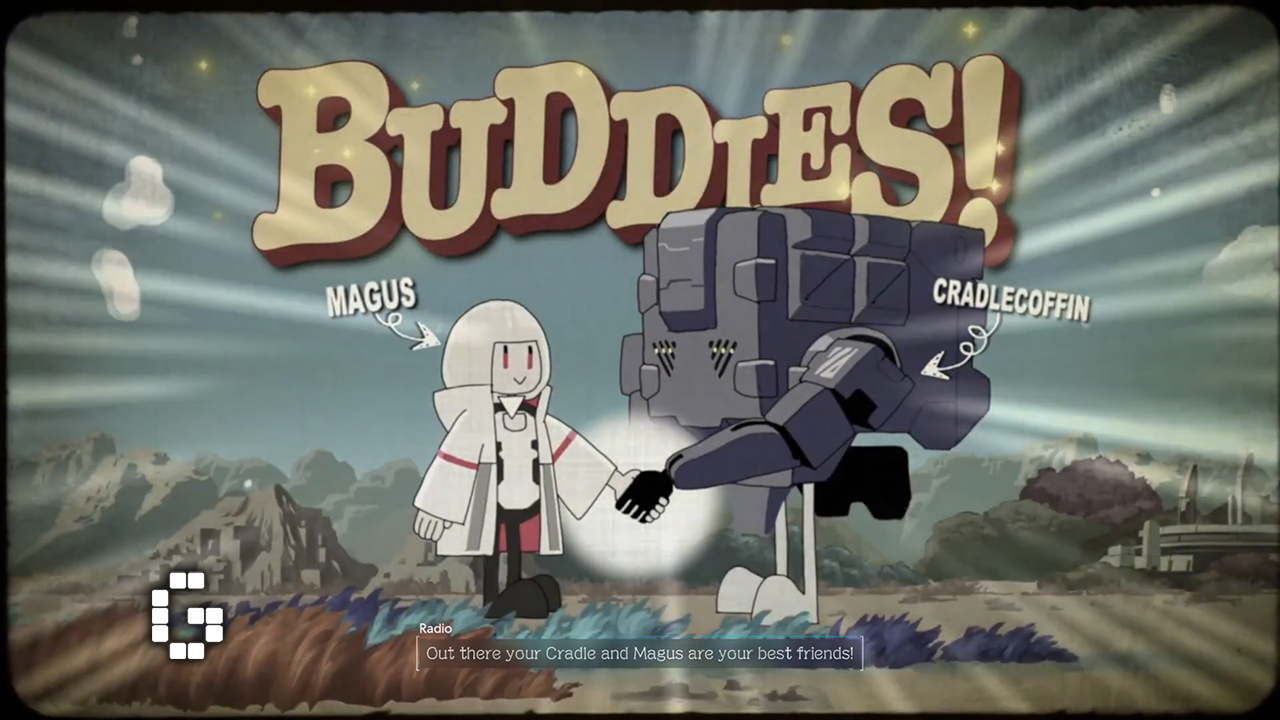SYNDUALITY Echo of Ada is an upcoming extraction shooter that blends mecha combat with exploration and resource gathering. The closed network test reveals an ambitious entry in the extraction shooter genre, setting itself apart with its unique blend of mecha combat and resource gathering mechanics. The game places players in the role of Drifters on the planet Amasia, where they pilot sophisticated COFFINCRADLE mechs through hazardous territories.
Gameplay
The core gameplay loop of SYNDUALITY Echo of Ada revolves around venturing into hostile territory to gather AO crystals, which serve as the primary currency in the game’s economy. These valuable resources can be sold to fund future expeditions, upgrade equipment, and sustain the player’s operations. Each excursion into Amasia’s dangerous landscapes is a calculated risk, balancing the potential rewards against the very real dangers that lurk around every corner.

Playing as a Drifter feels distinct from other mecha games. Unlike the fast-paced action of titles like Armored Core VI: Fires of Rubicon, SYNDUALITY opts for a weightier, more deliberate approach to movement and combat. The Magus companion system adds a compelling layer to the experience. My customized AI partner proved invaluable during exploration, providing crucial alerts about nearby resources and potential threats. The companion can be tailored to complement different playstyles, offering various support options from jamming enemy systems to providing offensive support through missile barrages.

Resource management plays a crucial role in the gameplay loop. Each expedition requires careful planning, as ammunition scarcity and battery management create meaningful strategic decisions. During missions, I often found myself weighing the risks of engagement against the potential rewards, knowing that death could result in the loss of valuable equipment or even the temporary loss of my Magus companion – which would require a substantial ransom to recover.

World and Environment
SYNDUALITY’s dystopian world presents a harsh and unforgiving environment where danger lurks around every corner. During my exploration of this meticulously crafted setting, I encountered a layered ecosystem of threats that kept me constantly on edge, creating a tense atmosphere that never quite lets up.

The most prominent threats are the Enders,monstrous creatures that guard crystal deposits. These beings, born from the game’s lore, can quickly turn from passive to aggressive when they detect a Drifter’s presence. The persistent PvP system means that every encounter with another Drifter carries potential consequences.
Environmental hazards, particularly the toxic rain system, add another layer of tactical consideration to each expedition. I learned this lesson the hard way when what appeared to be adequate cover failed to provide protection from a sudden toxic downpour. This forced me to quickly abandon my position, leaving me exposed to nearby Enders. The dynamic weather system isn’t just a visual flourish – it’s an active participant in the gameplay loop that demands constant awareness and adaptation.

What makes SYNDUALITY’s world design particularly effective is how these various threats interact with each other. A straightforward crystal gathering mission can quickly evolve into a complex scenario where you’re simultaneously managing Ender aggression, toxic rain exposure, and the uncertain intentions of approaching Drifters.
Current State and Potential
Despite its current technical hurdles, my time with SYNDUALITY revealed a promising foundation. The game successfully balances multiple gameplay elements – from tense PvP encounters to environmental hazards and resource management – while maintaining its unique identity. The “one more sortie” appeal is strong, driven by the combination of risk, reward, and the distinctive relationship with the Magus companion.

The learning curve feels well-tuned, with an effective tutorial covering basic mechanics while leaving room for mastery through experience. During my playthrough, I found that the real challenge is in developing situational awareness – learning to read encounters and manage resources effectively rather than simply mastering controls.

Running the game on my system (Intel Core i5-11600K, 16 GB RAM, GeForce RTX 2070), I experienced mixed performance results. While general movement and combat felt responsive, frame rate drops occurred during intense combat scenarios or when multiple Enders appeared on screen. The inventory management system proved cumbersome, with limited space and bulky ammunition taking up significant storage capacity.
Several technical issues require attention. Hitbox detection needs refinement, particularly for precise shooting, and the translation quality shows room for improvement. These issues, while not game-breaking, did impact the overall experience and would benefit from optimization before full release.

If developers can address the technical issues while building upon these strong foundations, SYNDUALITY Echo of Ada has the potential to carve out a unique niche in both the mecha and extraction shooter genres. The game’s distinctive approach to companionship, combat, and resource management sets it apart from its contemporaries, offering something fresh in an increasingly crowded market.










![[gamescom asia 2024] EXCLUSIVE: Former PlayStation Chairman Shawn Layden Speaks About Modern Gaming’s Biggest Challenge](https://cdn.gamerbraves.com/2024/10/Shawn-Layden_Interview_FI-360x180.jpg)
![[gamescom asia 2024] Evolving the Hunt: Ryozo Tsujimoto Discusses Monster Hunter Wilds’ Immersive World and Gameplay Innovations](https://cdn.gamerbraves.com/2024/10/Monster-Hunter-Wilds-gamescom-asia-2024_Interview_FI-360x180.jpg)
![[gamescom asia 2024] Takayuki Nakayama and Shuhei Matsumoto Share the Future and Evolution of Street Fighter 6](https://cdn.gamerbraves.com/2024/10/Street-Fighter-6-gamescom-asia_Interview_FI-360x180.jpg)
![[TGS24] Kazutaka Kodaka Shares His Ambitions on The Hundred Line -Last Defense Academy-](https://cdn.gamerbraves.com/2024/10/Kodaka-TGS_Interview_FI-360x180.jpg)
![[LEVEL UP KL] EXCLUSIVE: Navigating the New Normal: Justin Berenbaum on Game Funding](https://cdn.gamerbraves.com/2024/10/Xsolla_Interview_FI-360x180.jpg)
![[LEVEL UP KL] EXCLUSIVE: Hajime Tabata Unveils Vision for Malaysian Gaming at LEVEL UP KL](https://cdn.gamerbraves.com/2024/10/Hajime-Tabata_Interview_FI-360x180.jpg)
![[IGDX 2024] AGI President Shafiq Husein Outlines Vision of Indonesia’s Gaming Revolution](https://cdn.gamerbraves.com/2024/10/Shafiq-Husein_Interview_FI-360x180.jpg)

![[LEVEL UP PLAY 24] EXCLUSIVE: Anisong Sensation Nami Tamaki Shares How the Gundam SEED Series Opened Her Music Career](https://cdn.gamerbraves.com/2024/10/Nami-Tamaki_Interview_FI-3-360x180.jpg)









